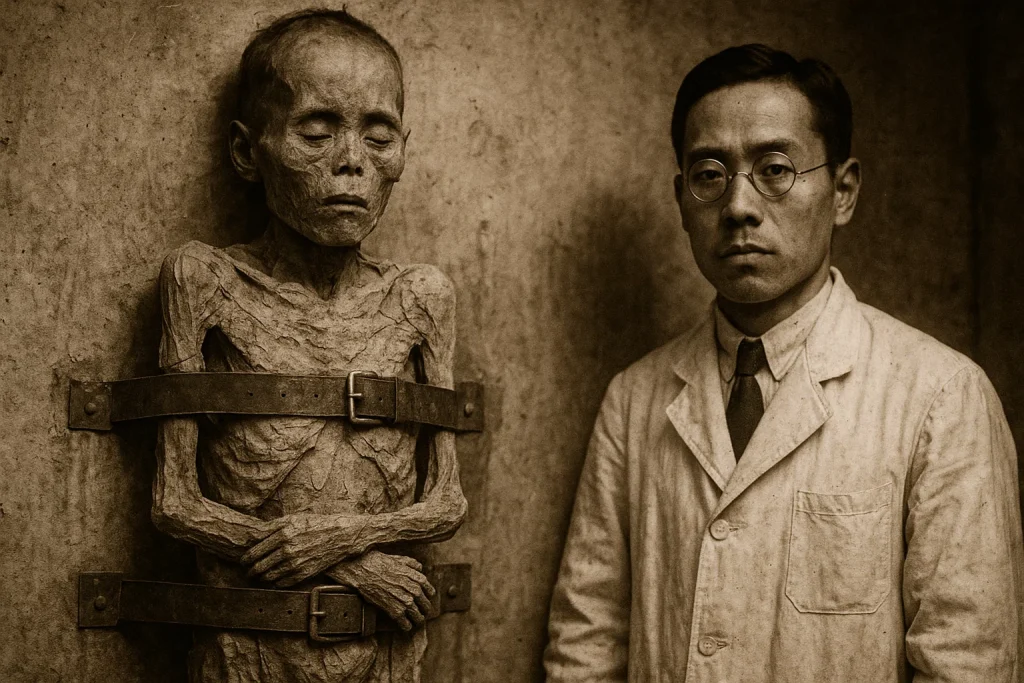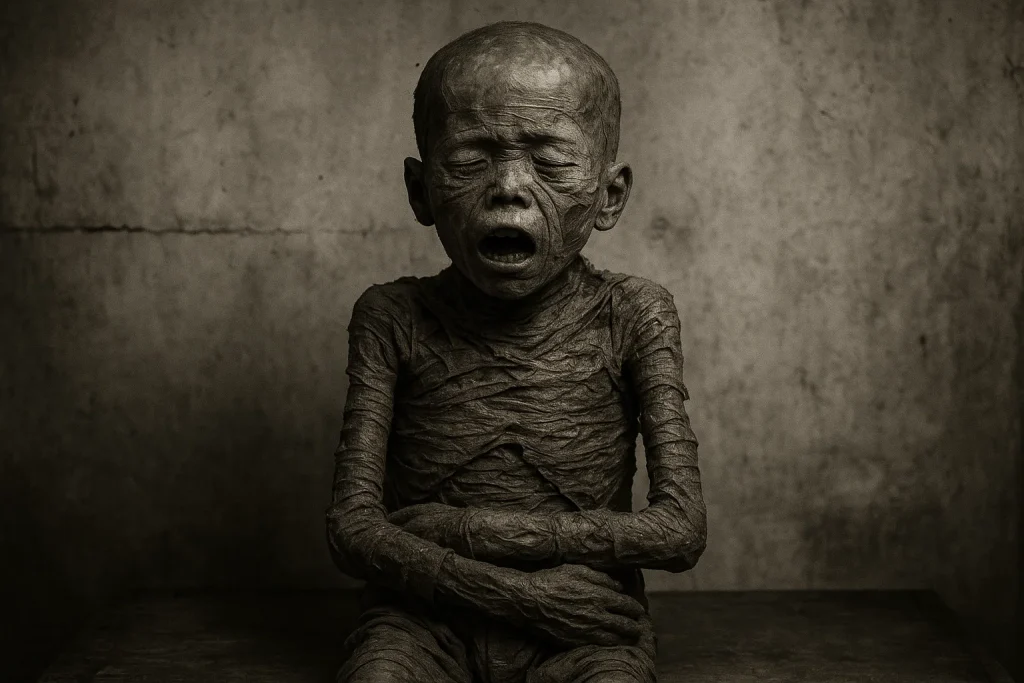⏲️ Estimated reading time: 4 min
The Horrifying Story of Kim Ung Tong: A Child Victim of Wartime Mummified Medical Experiments
Japanese doctors mummified Kim Ung Tong alive during the occupation of Korea, using his young body for medical experiments. His tragic death exposes the cruelty hidden in military labs and serves as a chilling reminder of forgotten war crimes.
In the shadows of World War II, atrocities occurred far from the battlefield. One of the most heartbreaking stories involves Kim Ung Tong, a Korean boy victimized by the Japanese Imperial Army. His death resulted not from war, but from cold, calculated medical experimentation. His story brings to light a disturbing legacy that many still try to forget.
Japan’s Occupation of Korea
From 1910 to 1945, Japan ruled over Korea. The empire enforced strict control, suppressed Korean culture, and exploited its people. Historians have documented the forced labor and cultural erasure. But lesser-known horrors unfolded in secret medical labs across East Asia.
Japanese military units, especially Unit 731, conducted brutal human experiments. These facilities operated under the guise of scientific progress and disease research. In reality, they used innocent civilians including children as test subjects.

Who Was Kim Ung Tong?
Kim Ung Tong was a 5-year-old boy living in Korea. During the Japanese occupation, military officers removed him from his family without explanation. Authorities sent him to a medical facility where researchers tested radical preservation techniques.
Instead of healing or helping, these scientists treated him like a disposable object. They began experimenting on his living body using chemicals and surgical procedures designed to preserve flesh without allowing natural decay.
The Live Mummified Procedure
Japanese doctors used Kim as a subject for a horrifying project: live mummification. They kept him alive while removing internal fluids and organs. The goal was to see how long a human could survive as their body underwent extreme desiccation.
Researchers injected preservatives and drained his bodily fluids while monitoring the effects. As his organs shut down, they kept him conscious to document his reactions.
Eventually, Kim died not from disease or injury but from science go out of control. His body remained intact for years as a “successful” specimen of preservation.
What Happened After His Death?
Researchers allegedly displayed Kim’s body in a Japanese medical university. Postwar investigators reported seeing the body of a mummified child in glass. Witnesses described the child’s features and the signs of preservation techniques.
After Japan’s surrender in 1945, Allied forces discovered some of these laboratories. American and Soviet agents found documentation, preserved specimens, and testimonies from former staff. However, much of the evidence disappeared, and many responsible officials avoided trial.

The Cover-Up and Immunity Deals
Unlike Nazi doctors, many of Japan’s military researchers escaped punishment. The United States traded immunity for scientific data, especially in biological warfare. This deal blocked justice for victims like Kim Ung Tong.
Doctors who committed these crimes later found jobs in respected institutions. Some even launched postwar scientific initiatives in Japan.
Public Memory and Recognition
For decades, few spoke about Kim’s fate. Korea, recovering from war and later divided by civil conflict, couldn’t focus on memorials for individuals. Only recently have researchers and human rights groups unearthed stories of victims like Kim.
Although no grave exists under his name, his memory now stands as a symbol of forgotten injustice. War museums in Korea and China include his story in exhibits about Japan’s wartime crimes.
Why Kim Ung Tong’s Story Still Matters
Kim’s suffering reveals the dangers of unchecked power and dehumanization. His story forces us to confront war crimes that target the vulnerable especially children.
We must remember his name. Not just to mourn the past but to shape a future where such violations never occur again.
By sharing his story, we honor Kim Ung Tong and the thousands of unnamed victims whose pain still echoes through history.
Never Forget: The Message of His Life
The story of Kim Ung Tong isn’t just about horror it’s about responsibility. His life challenges us to speak out, preserve truth, and defend human dignity. As long as we remember him, we deny those who tried to erase him from history.
🔔 For more tutorials like this, consider subscribing to our blog.
📩 Do you have questions or suggestions? Leave a comment or contact us!
🏷️ Tags: war crimes, Kim Ung Tong, Japanese occupation, human experimentation, Unit 731, Korean history, medical atrocities, child victims, dark history, war tragedies
📢 Hashtags: #KimUngTong #Unit731 #WarCrimes #HumanExperiments #JapaneseOccupation #KoreanHistory #MedicalEthics #ForgottenVictims #WWIIHorrors #ChildVictims
Final Reflection
Kim Ung Tong never lived to tell his story. But through the voices of survivors, investigators, and historians, his memory endures. His life tragically stolen now reminds us that even one child’s suffering must never be forgotten.
Only logged-in users can submit reports.
Discover more from HelpZone
Subscribe to get the latest posts sent to your email.

